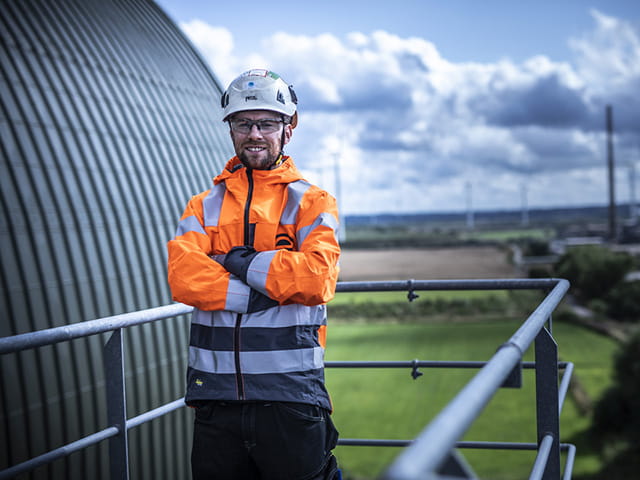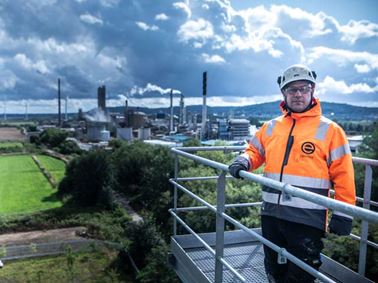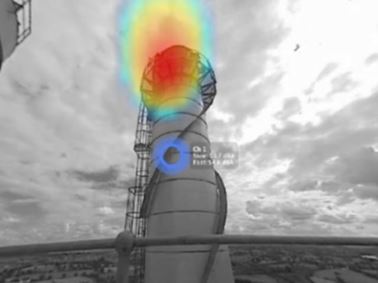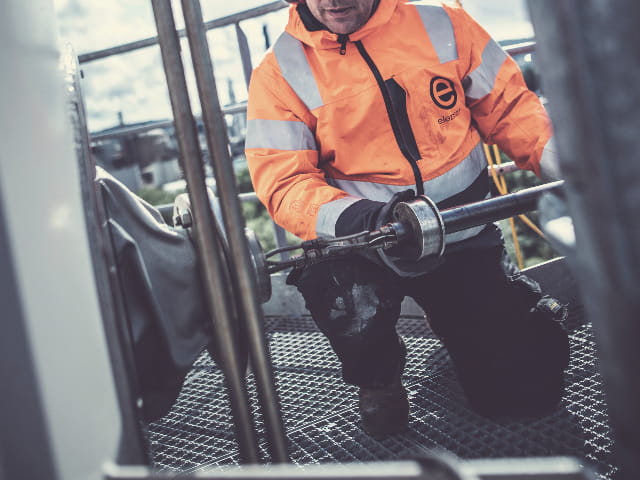This case study addresses a central challenge in carbon capture: the accurate quantification of the chemical composition of post-combustion flue gases.
The Background
Carbon Capture Utilization & Storage (CCUS) will play a crucial role in strategies to reduce industrial emissions and - with backing from governmental policies - there is major investment being made in new technologies for carbon capture plants in clusters across the UK.
Various post-combustion technologies are being trialed aimed at stripping Carbon Dioxide from the flue gas. For example, use of amine-based scrubbing or catalysts to capture the CO2 from the air emissions.
Our Emissions Monitoring team is supporting operators and technology providers with low levels of CO2 detection to make carbon capture a reality.

The Challenge
In the carbon capture process, quantifying the chemical composition of post-combustion flue gases stands as a critical step before these gases enter the carbon capture system. Ensuring this quantification is accurate and precise is paramount to the efficient and effective operation of the plant.
Flue gases post-combustion contain a diverse array of substances, each present at varying concentrations. These concentrations can range from low percentages, parts per million (ppm), and even drop down to parts per billion (ppb). The challenge lies not only in identifying these substances but also in accurately measuring their concentrations.
The major challenge we face when characterizing and measuring these concentrations as they exit a carbon capture plant, is achieving very low limits of detection (LODs). The accuracy of the sampling method used becomes crucial in obtaining valid and reliable results. Our clients typically aim to achieve precise quantification to ensure compliance with regulatory standards, optimize the carbon capture process, and ultimately, maximize the plant's efficiency and output.
The Solution
Collaboration is key: we engage with clients to define the scope of testing, discussing parameters they wish to measure and establishing limits of detection. Following this, Element conducts a comprehensive site review, evaluating sampling locations and addressing health and safety considerations.
Our process begins with mobilizing our advanced instruments directly to the client's site, enabling real-time sampling with unparalleled sensitivity using *SIFT-MS, FTIR, and other state-of-the-art tools. Samples are meticulously collected in pressurized canisters, ensuring integrity for subsequent laboratory analysis.
Our strategic presence with 10 offices in close proximity to carbon capture clusters ensures that we can provide localized expertise, offering clients timely and responsive support.
Our monitoring is aided by our Centre of Technical Excellence, where our experts meticulously interrogate emissions data, ensuring accuracy and reliability at every step.
*SIFT-MS (Selective Ion Flow Tube Mass Spectrometry), is a technique used for ultra-precise, real-time measurements of airborne compounds at remarkably low levels.

The Result
Our emissions monitoring services are playing a pivotal role in advancing Carbon Capture Utilization & Storage (CCUS) initiatives.
Through collaborative engagement, precise testing parameters, and cutting-edge instrumentation like SIFT-MS and FTIR, we've provided clients with real-time, sensitive monitoring directly at their sites. This approach has not only ensured regulatory compliance but has also optimized processes, enhanced efficiency, and maximized output.
By accurately quantifying chemical compositions and achieving low limits of detection, we've empowered our clients to navigate regulatory landscapes confidently and drive sustainable industrial practices forward.
Related Pages

Stack Emissions Testing
Find out how our stack emissions testing services help our customers to prevent exposure, reduce emissions, improve air quality and achieve regulatory compliance for the industrial installations they operate.

EN 14181 Calibration & Testing
Element experts offer EN 14181 calibration services including QAL1, QAL2, QAL3 and ASTs to verify the performance of CEMS and ensure regulatory compliance.

Biogenic Carbon 14 Emissions Monitoring
Find out more about our OFGEM approved Biogenic Carbon 14 Measurement services, used to determine the renewable energy content of waste-derived fuels.

e-Mission Portal for Stack Emission Testing
Find out more about e-Mission portal, our groundbreaking industry online tool allowing you to plan and track your stack emission testing programs and trend your data.

Medium Combustion Plant Directive
Element supports clients in the UK and Ireland with emission testing to demonstrate compliance with MCPD and give guidance throughout the permitting process.

Residence Time Verification
Find out more about our Residence Time services, offering verification of two seconds residence time within secondary combustion chambers for waste incinerators.

Greenhouse Gas Monitoring
Do you need to assess your current carbon footprint or identify ways to reduce your carbon emissions? Element can help with greenhouse gas monitoring.

Environmental Impact Assessments
Element’s industry experts provide environmental impact assessments for air quality, noise, and vibration, which must be closely considered through the planning process.
Air Quality Testing Services
Emissions, Gases and Air Testing

